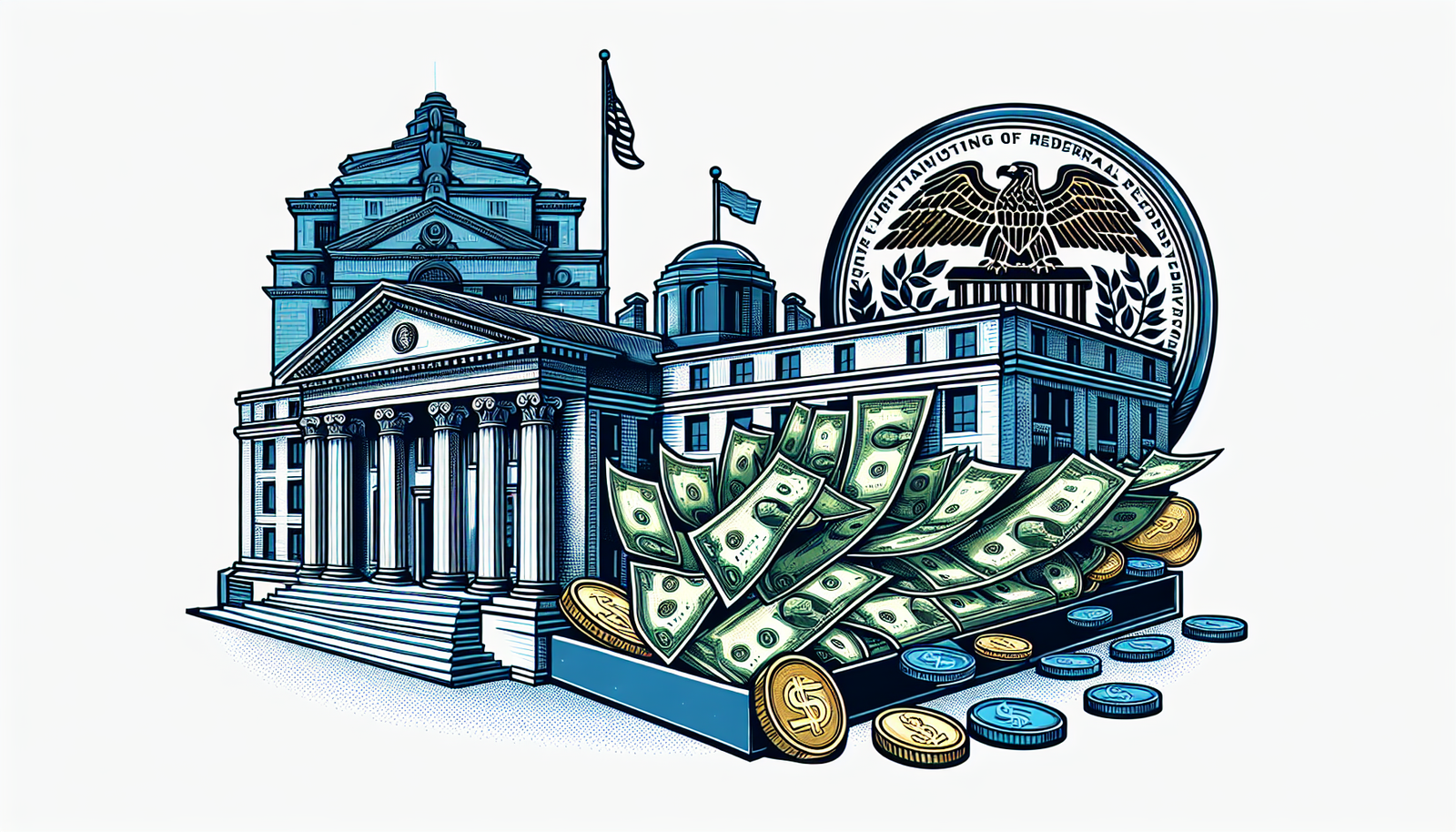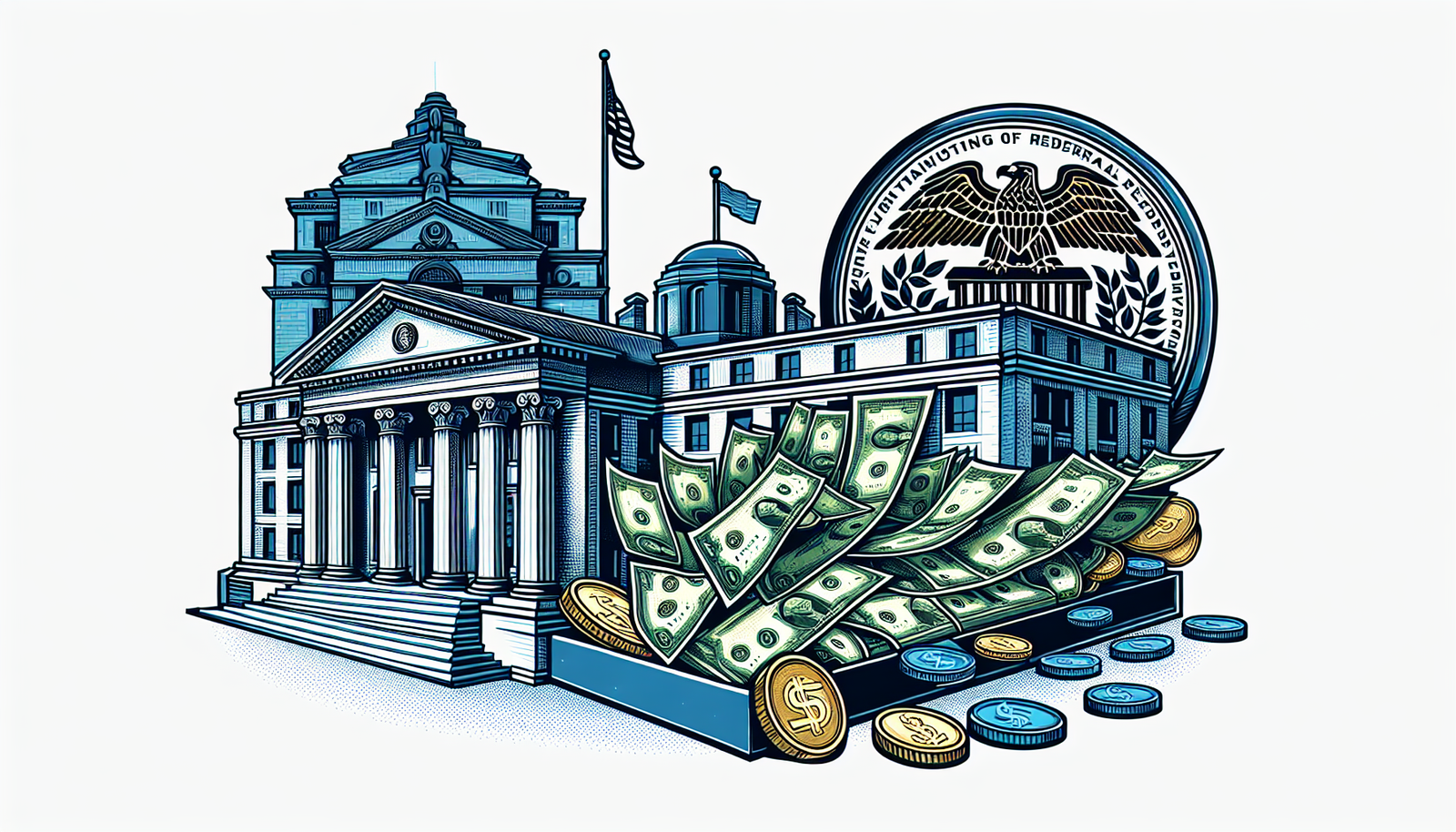
Step into the world of finance and discover the intricate dance between banks and the Federal Reserve, the supreme conductor within the economic orchestra of the United States. This fascinating exploration uncovers the relationship between these financial juggernauts, shedding light on the query, “Do Banks Get Money From the Federal Reserve?” Prepare to unravel the hidden links and deepen your understanding of the complex choreography that powers the US economy.
Understanding the Role of the Federal Reserve
The Federal Reserve, often referred to as the ‘Fed,’ is not your everyday bank, but rather a unique entity operating under the radar of the U.S banking ecosystem. Its purpose, operations, and influence extend far beyond the control of ordinary banks.
The Federal Reserve as America’s central bank
As America’s central bank, the Federal Reserve is the main custodian of the country’s monetary system. Picture it as the colossal cog in the extensive wheel of the financial system, primarily responsible for navigating the country’s economic direction.
Oversee and regulate banks and other important financial institutions
Imagine the Federal Reserve as a guardian or the watchman of the financial system. It is their job to keep a faithful eye on banks and other significant financial entities within the U.S. They establish and enforce the regulations that banks must follow, ensuring that these institutions operate within acceptable means.
Play a key role in maintaining the health of the economy
The Federal Reserve plays an invaluable role in upholding the country’s economic health. Through actions such as adjusting interest rates and monitoring inflation, the Fed aims to maintain economic stability and growth. It’s like the country’s financial physician: diagnosing, treating, and constantly checking the pulse of the economy.
Channels through which Banks get money from the Federal Reserve
The Federal Reserve isn’t a treasure trove from where banks can effortlessly pick bundles of cash. Yet, it provides several mediums through which banks can secure funds.
Through the Discount Window
The Discount Window resembles a last resort for banks that need cash. It’s the avenue banks can utilize to borrow directly from the Fed when their reserves fall short or during crisis periods.
By participating in Open Market Operations
The Open Market Operations (OMO) is like a financial concert where the Federal Reserve conducts the orchestra of banks and other financial institutions. Here, the Fed buys and sells Treasury securities to control the money available in the marketplace.
Through the Federal Funds Rate
The Federal Funds Rate is the interest rate banks charge each other for short-term loans, and the Fed maintains control over this. Variations in this rate have a domino effect on the interest rates applicable to consumers and businesses.
Through Reserve requirements
The Federal Reserve uses Reserve Requirements as a financial lever to ensure that banks have enough reserves to meet their customers’ needs. Reserve Requirements dictate the amount of money a bank must keep either in its vault or at the local Federal Reserve Bank.

Discount Window
While the term might suggest a market or shopping phrase, the Discount Window is actually a standard credit service offered by the Federal Reserve.
Understanding the concept of the Discount window
In essence, the Discount Window acts as an emergency tap through which banks can draw funds from the Federal Reserve. Usually, this service becomes critical during financially tight or crisis periods when banks need to maintain reserve requirements or address liquidity issues.
The process involved when banks borrow from the Discount Window
When a bank decides to take funds from the Discount Window, it submits an application. If approved, the funds are electronically sent to the bank’s reserve account. The bank then gives the Federal Reserve collateral, which can be treasury securities or other approved assets.
The interest associated with Discount Window loans (Discount Rate)
Just like any loan, borrowing from the Discount Window is not free — it comes attached with an interest rate known as the Discount Rate.
Open Market Operations
Open Market Operations (OMOs) are one of the most potent tools in the Federal Reserve’s arsenal to navigate the economy’s direction.
Understanding Open Market Operations
In simple terms, Open Market Operations involve buying or selling government bonds and Treasury securities. When the Fed buys these securities, it injects money into the economy, while selling them removes money from circulation.
How banks get money through Open Market Operations
When the Fed buys Treasury securities, the money it pays would go into the bank accounts of the individuals or institutions that sold the securities. Thus, increasing the amount of money they have to lend.
The impacts of Open Market Operations on the economy
Open Market Operations significantly affect the national economy. For instance, suppose the Federal Reserve wants to stimulate economic activity. In that case, it could buy securities, which increases the amount of money in circulation, thereby lowering interest rates and encouraging borrowing and spending.

Federal Funds Rate
The Federal Funds Rate can be considered as the central heartbeat pulsing through the arteries of the American banking system.
Explanation of the Federal Funds Rate
The Federal Funds Rate is the interest rate that banks charge one another for short-term loans. The Federal Reserve does not directly set this rate, but it does influence it.
How Federal Funds Rate impacts banks
Changes in the Federal Funds Rate ripple through the entire banking system, affecting the rates your local bank offers for mortgages, car loans, and savings accounts.
The relationship between the Federal Funds Rate and banks borrowing from the Federal Reserve
Banks often prefer to borrow from other banks to meet reserve requirements because the Federal Funds Rate is usually lower than the Discount Rate. But if the Federal Funds Rate rises too high, banks may decide to borrow directly from the Fed through the Discount Window.
Reserve Requirements
Think of Reserve Requirements as the solvency lifelines for banks, ensuring they have enough money on hand to meet customers’ needs.
What are Reserve Requirements
Reserve Requirements are regulations stipulated by the Federal Reserve that determine the minimum amount of reserves a bank must keep on hand.
How Reserve Requirements indirectly help banks get money
Because Reserve Requirements ensure banks have enough cash to meet clients’ withdrawal requests, they indirectly help insure banks have enough liquidity to run their day-to-day operations.
Relation between Reserve Requirements and bank’s liquidity
If a bank’s reserve falls below the required level, it could face liquidity issues and struggle to meet customer demands. Thus, Reserve Requirements play a critical role in maintaining a bank’s financial health.
The Relationship Between Banks and The Federal Reserve
The relationship between banks and the Federal Reserve is intricate, much like a symphony with each player relying on the other to create a harmonious melody.
Importance of The Federal Reserve to banks
The Federal Reserve serves as a pivot around which banks revolve. It’s like a safety net providing banks with financial support when needed, regulatory oversight, monetary benchmarks for lending rates, and a system for transferring funds.
Why banks borrow from the Federal Reserve
Banks borrow from the Federal Reserve for several reasons, such as to meet reserve requirements, respond to a liquidity crisis, or take advantage of low interest rates to lend to their customers at a profit.
How the Federal Reserve regulates banks
The Federal Reserve ensures that banks operate safely and soundly by establishing and enforcing regulations. It conducts regular examinations to ensure banks adhere to these rules and takes corrective measures if they do not.
Costs and Benefits of Borrowing from the Federal Reserve
Much like a tango, borrowing from the Federal Reserve implies a delicate dance of costs and benefits for banks.
Advantages of banks borrowing from the Federal Reserve
Borrowing from the Federal Reserve can provide banks with the urgently needed cash to meet their customers’ demands and fulfill the reserve requirements. It offers a reliable and instant source of funds, especially during crises.
Disadvantages of banks borrowing from the Federal Reserve
However, there are a few drawbacks. For instance, banks borrowing from the Discount Window must pay interest on the borrowed money. Besides, frequent borrowing from the Fed might signal to the market that the bank has financial problems, damaging its reputation.
Why banks sometimes choose not to borrow from the Federal Reserve
Given these disadvantages, banks sometimes choose not to borrow from the Fed, especially if they can get funds at lower interest rates elsewhere.
Banks’ Influence on the Monetary Policy
Now, don’t be mistaken. Banks aren’t just passive observer in the financial seascape – they also play a proactive role in shaping the monetary policy.
How banks response to the policy changes set by the Federal Reserve
When the Federal Reserve alters the monetary policy, banks respond accordingly by adjusting their lending rates and borrowing practices.
The effect of bank’s actions on the economy
The decisions made by banks can significantly impact the economy. For instance, if an increase in the Federal Funds Rate prompts banks to increase their lending rates, it could slow down economic activity as borrowing becomes expensive.
The role of banks in implementing monetary policy
Banks play a crucial role in executing the monetary policy set by the Federal Reserve. When the Federal Reserve adjusts the Discount Rate or Reserve Requirements, it’s up to the banks to respond and align their operations to these changes.
Future of Banks and Federal Reserve Relationship
The relationship between the Federal Reserve and banks is a dynamic one. It evolves with socioeconomic situations, technology advances, and regulatory changes.
Possible changes in monetary policy
Future changes in monetary policy will depend on various factors like economic health, inflation, and fiscal policy. Banks should keep their scopes aligned to these changes and adjust accordingly.
Potential impacts of technology on the banking system and Federal Reserve
Technological advances are bound to change the face of banking operations and Federal Reserve practices. Cloud computing, AI, quantum computing, and blockchain technology will offer opportunities but also pose challenges that the banking sector and the Federal Reserve need to navigate.
The future role of banks in the economy
As technology continues to revolutionize financial services, the function and relevance of traditional banks may evolve. However, they will continue to be an indispensable part of the economy due to their role in fostering financial stability, promoting economic development, and implementing monetary policy.

Leave a Reply